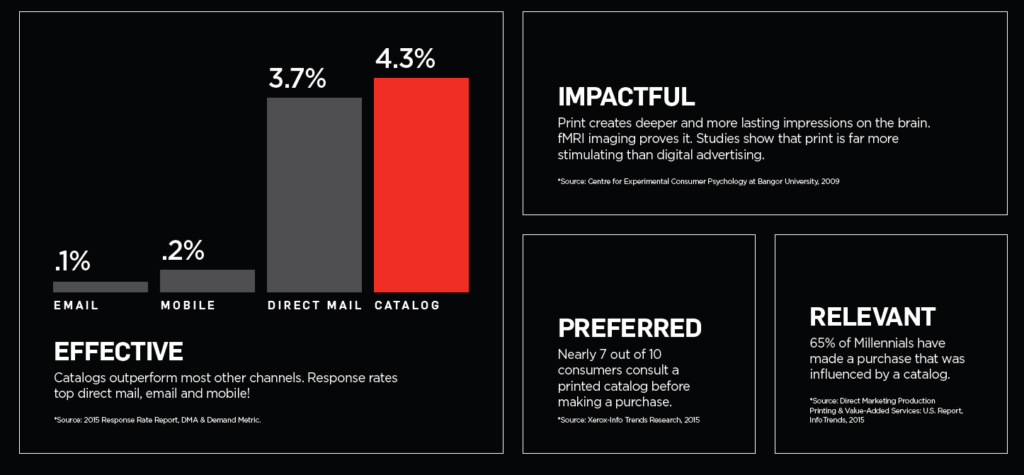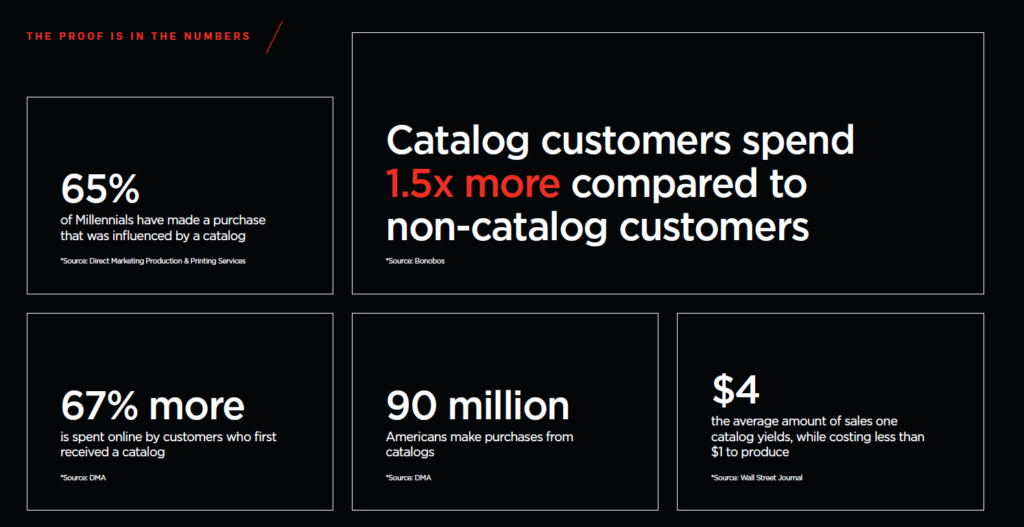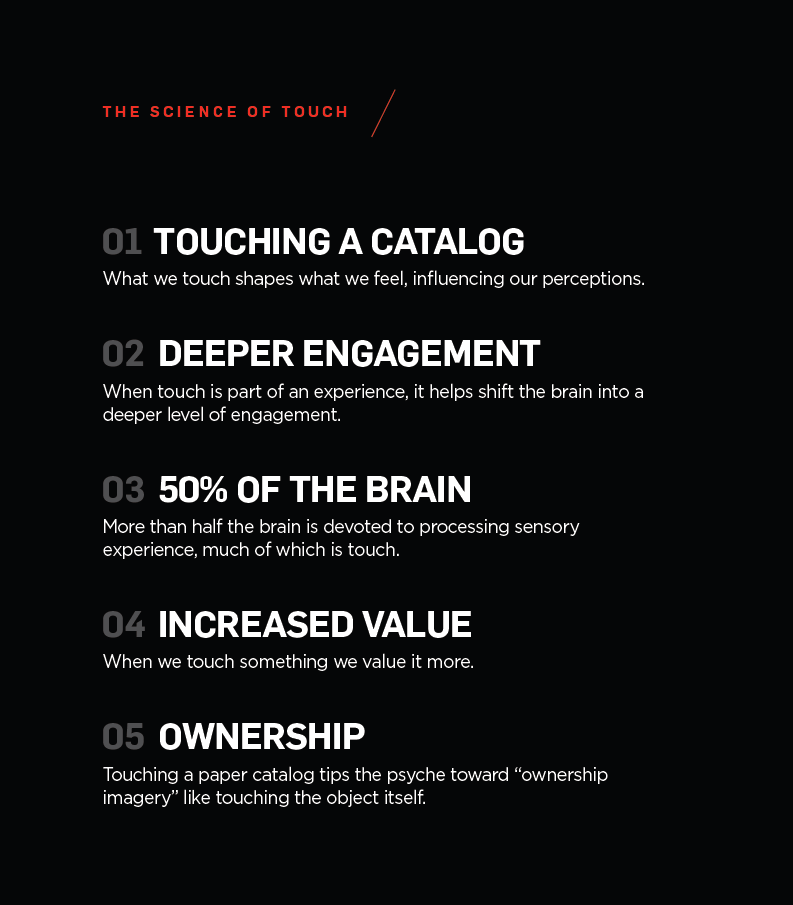
Over the last several years, we’ve seen catalogs come and go. And we’ve seen many retailers jump into the game, spend a LOT of money (we’re talking tens of millions of dollars) and then abandon the model after a couple of seasons. This literally breaks my heart and makes me want to scream! Why does this happen? Here is my very quick opinion. These brands have a combination of the following:
- A flawed merchandise concept that is not unique, delivered with out-of-date benefits or sent to an audience the brand knows nothing about.
- Bad math that doesn’t take into account mail efficiencies, an understanding of their own database, mailing to bad names at the wrong time or how the catalog model fits into a cross-channel world.
- A lack of understanding of how to create a landscape of words and imagery that truly sell off the page and drive activity to either a website or store.
I could go on, but those seem to be the top three. And, that’s all I’m going to say about it because I’d prefer to focus on WHY catalogs still work in this crazy, omni-channel world where new and shiny marketing tactics pop up every month.
So, if you’re thinking about mailing a catalog (or killing your catalog) here’s a case for why catalogs still work. And, for those of you building a case internally to either your boss or your board, don’t miss the infographics we’ve collected at the bottom.
- Catalogs Create Desire
Catalogs have the space and freedom to tell a story, share a lifestyle and create desire. Haptic research proves that the “hands-on” experience creates a sense of ownership, and ultimately, a strong shopping experience. When executed well, catalogs DISRUPT, DELIGHT and DRIVE response. And, according to recent research, ALL ages love receiving and browsing catalogs if they have a strong, differentiated merchandise concept and a story to tell.

- Catalog Buyers Deliver Stronger ROI
Multiple brands have proven that catalog shoppers are more loyal and ultimately have a stronger lifetime value, providing a higher return on investment. And, catalog customers tend to have a higher average order. Because catalogs allow for tracking results, a brand can target the right customer (and prospect), at the right time with the right offer, guaranteeing the strongest results.

- Catalogs Provide Merchandise Intelligence
Using merchandise analysis, transactional data and the known rules of catalog design, catalogs provide the opportunity to effectively introduce new categories, expand on winning products, increase the average order value, position key price points and represent multiple categories… all while still driving the customer online to find more.
- Catalogs Drive Action
We believe that catalogs are a Digital Champion. For many brands, catalogs have proven to be the No. 1 driver to websites and even their retail stores. Why is this? A catalog is a disruptive marketing tool, delivered into the hands of a targeted audience. Furthermore, a catalog also drives social activities, strengthening the relationship with the brand. And the best news? According to InternetRetailing, consumers who shop multiple channels will spend 82% more on each transaction than those who only shop in store.
- Catalogs are Scalable
Catalogs, as a part of your marketing mix, can be scaled to achieve growth goals. With a solid customer segmentation strategy, access to affordable prospect names along with the testing of offers, merchandise and creative messaging, a brand can easily anticipate return on investment and build a program of growth or profitability (or a combination of both).

Interested in launching your own catalog? Reach out to me for a free ROAS at info@jschmid.com.
Tags: catalog, catalog industry, catalog marketing, direct mail, Direct Mail Industry, Lois Brayfield, marketing solution, ROI
